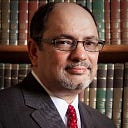Member-only story
History of October 31: What’s Martin Luther got to do with it?

See my mini-series here on the life of Martin Luther.
On October 31, 1517, the story goes, an Augustinian monk named Martin Luther nailed to the door of the Castle Church in Wittenberg, Germany 95 propositions or theses and marked the beginning of the Reformation. Of course, the Reformation began long before that, but this date proves to be a convenient coat hanger for historians to mark the beginning of the Protestant* Reformation.
However, the 95 Theses were not intended as a call to reformation, and it is the story behind this event that proves so fascinating and shows the real purpose of the 95 Theses.
Fund Raising
Prince Albert of Brandenburg wanted the archbishopric of Mainz. You may know the city of Mainz as the home of a goldsmith named Johann Gutenberg, who had developed the uniform-sized movable type printing press some 60–70 years earlier. Because Albert was younger than 25 years old, and because holding multiple archbishoprics was forbidden, the office of archbishop required a dispensation that would cost him 23,000 ducats (about $500,000.)
Pope Leo X, who was then financing the building of St. Peter’s Basilica in Rome (for $46 million), suggested that Albert borrow the money from the wealthy Fugger banking family in Augsburg. Albert was able to secure half the funds from Jacob Fugger, banker to the Pope and the Hapsburg Dynasty, and for the rest, he sold indulgences.
Indulgences
An indulgence was a document that freed the holder from the temporal penalty of sin. The sale of indulgences, originally introduced during the Crusades, remained a favored source of papal income. In exchange for a meritorious work — frequently, a contribution to a worthy cause or a pilgrimage to a shrine — the Roman church offered the sinner exemption from his acts of penance by drawing upon its “treasury of merits.”
According to the Roman church’s doctrine of ex opere operato, this consisted of the superabundance of grace accumulated by Christ’s sacrifice on the cross along with the meritorious deeds of the saints. This surplus, dispensed by the Pope, could be used by sinners. For example, in the Castle Church at Wittenberg, it was…
